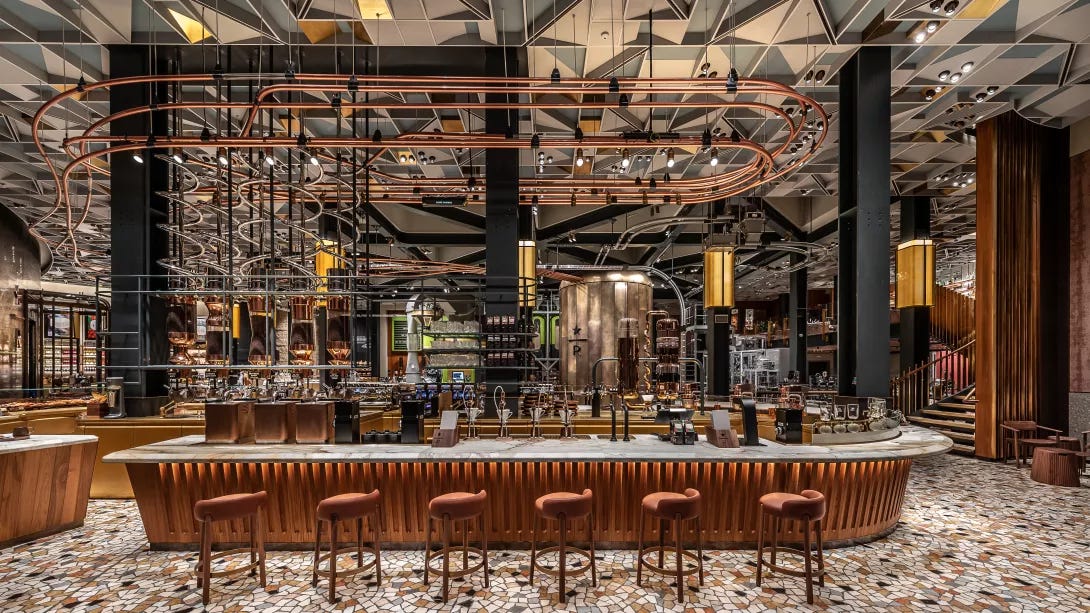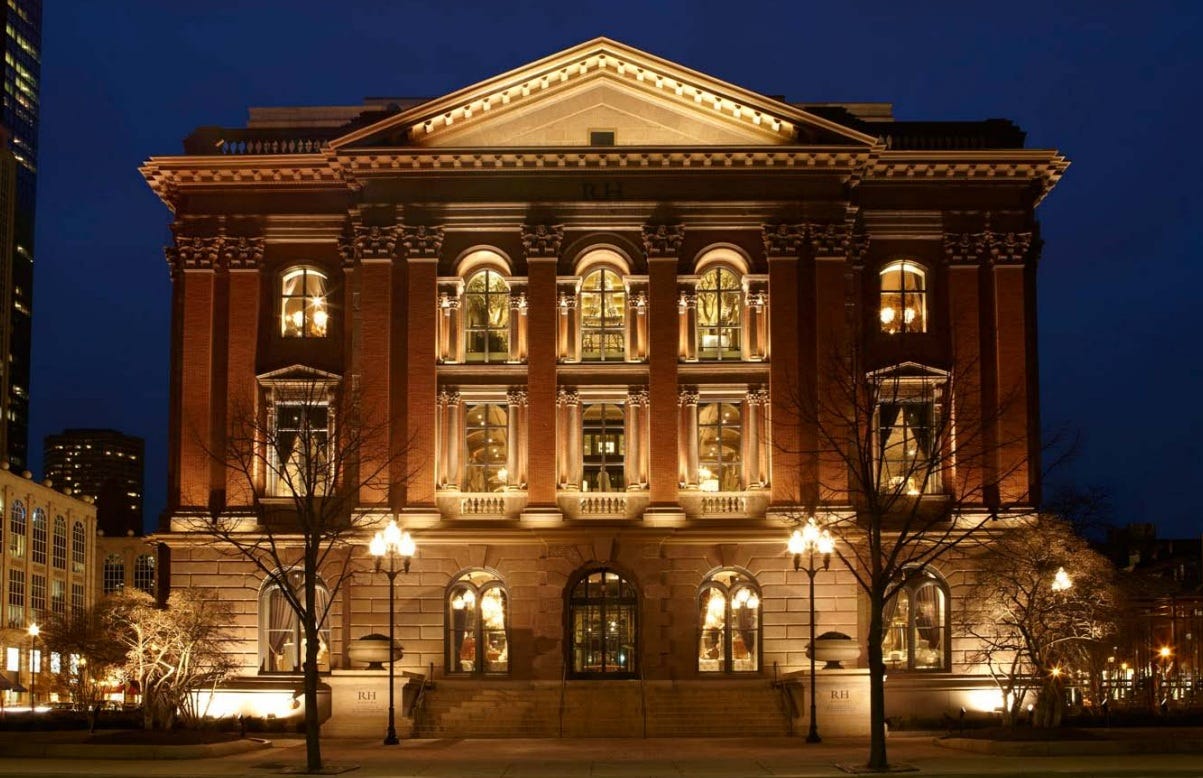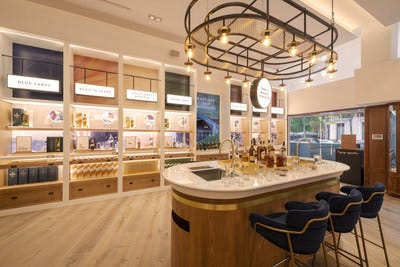Planting the flag: My top 5 brand homes around the world
Proof that, with passion and commitment, brand homes can be a success anywhere
So, I’ve decided to write a quick post on my absolute favourite brand homes from around the world.
It’s far from a comprehensive list. In fact, to some degree it’s a ridiculous idea. What even is a brand home, really? And clearly I haven’t visited them all.
In reality, this post would be more accurately titled “Five of my favourite examples of flagship-type/brand home spaces I’ve seen in the last year or two - which by no means is exhaustive, it’s just a bit of fun, relax” but that isn’t a snappy or algorithm-friendly title is it.
Anyway, here we go.
Swarovski Kristallwelten - Tyrol, Austria
To some degree this space is the whole reason I decided to write this post. It’s unbelievably good and I want to go back.
Why is it so good? Primarily because I’ve never seen anything else like it. I don’t really know how to define what it is.
At its heart it’s an incredible, regularly changing art exhibition - several immersive “worlds” where artists create experiences involving crystals.
It’s also a museum, citing the rich and fascinating history of Swarovski.
But it also features vast outdoor playgrounds and experiences for the whole family, a large events space, a beautiful restaurant and a vast shopping area.
And the entire location is set within the foot of the Austrian alps, with Swarovski’s headquarters visible along with the most pristine alpine beauty.
Best of all? No one really talks about it. It’s a hidden gem. Well, a hidden diamond.
Norrøna House - Oslo, Norway
The magic of Norrøna House didn’t hit me when I saw the huge store, repair centre, in-house restaurant overlooking a waterfall, events space, exhibition of its advertising history, or storm machine (which recreates the experience of a Nordic storm while you wear one of their jackets).
It hit me when Jorgen Jorgensen, CEO and fourth generation of the founding family, sat down casually for a beer with someone as I was wandering the space.
I asked my friend who Jorgen was with, and he said “oh that’s a customer I think. Jorgen often sits and has a beer with the customers as they walk in”.
That’s the beauty of this space. It’s all built underneath Norrøna’s head office, and the senior team are constantly crossing paths with customers and fans downstairs in the cafe and shop.
There is no barrier or division between the business and its buyers. That’s real community, and they all connect here.
Starbucks Reserve - Milan, Italy
A brief confession: I don’t really like Starbucks. It’s nothing personal - I don’t especially like Costa or other big chains either.
I don’t really even like Blank Street. I like indie coffee shops because I’m a coffee snob, and I just think the coffee and experience of a great indie can’t be replicated anywhere else.
However, I do like ambition - and I think Starbucks Reserve in Milan is a remarkably ambitious story.
Now, compared to the Milanese I’m an entry-level coffee snob. This is a city and a culture that is obsessed with coffee and drowning in places where you can buy the best espresso imaginable for a Euro.
Starbucks to the Milanese was, to put it mildly, cheap American crap. It didn’t belong.
To this day, I have no idea how Starbucks managed to get Reserve Milan over the line. But even more remarkably, it’s brilliant - and a huge success.
And that’s because they committed. They made sure the coffee, food and aperitivo was exceptional. They also made sure the experience within the space was so extraordinary and impressive that even the most hardened anti-Americans couldn’t deny its quality.
It’s a great space. But the fact it exists is what makes it stand out.
RH - Boston, US
RH (Restoration Hardware - way less glamorous when it isn’t abbreviated) probably have even more remarkable flagships than the Boston one. Chicago gives it a run for its money, and RH England is mind-blowing.
But there’s something about the Boston one.
Its furniture is sparsely positioned throughout the New England Museum of Natural History.
And the refurbished building hasn’t really been altered. This museum, built in 1863, is a grand structure that is one of the least commercial-looking spaces I’ve ever seen.
Walking in for the first time, you can’t help but feel slightly confused. Is this a retail space? And doesn’t this brand also have some very ordinary looking furniture stores in shopping malls across the US?
It’s consistently odd, and consistently beautiful. And there is nothing quite like it.
The commitment to the museum look and feel is total and remarkable. And above all, forged in my memory.
Johnnie Walker Experience - Madrid, Spain
Structurally and architecturally, this is the least remarkable of the spaces on this list.
And yet it totally delivers.
It just seems to understand that a brand home is about connection to brand fans, and passion for what it does. It’s about giving people who’ve made that pilgrimage something unforgettable and unachievable elsewhere.
Johnnie Walker does this through tasting.
Everyone who walks through the door is embraced and encouraged to taste and experience the history of the brand. From rare whiskies to cocktail making, I just remember how focused they were on ensuring that a total novice like me left with a deeper appreciation of this drink, its history, and the passion that’s gone into it.
I guess it’s a really good example of how memorable brand homes can be created in ordinary high street locations.
It helps to have acres of land in the Austrian alps, but actually, with passion and commitment, brand homes can be a success anywhere.
Extra insights:
New blog post: Why the perfect path to purchase starts with being seen.









I didn't know about the Johnny Walker experience. Thank you!